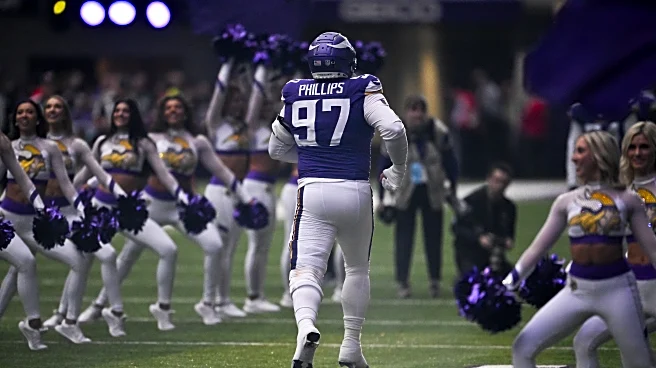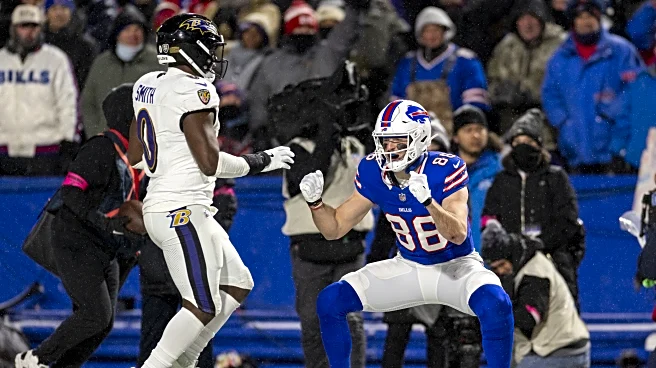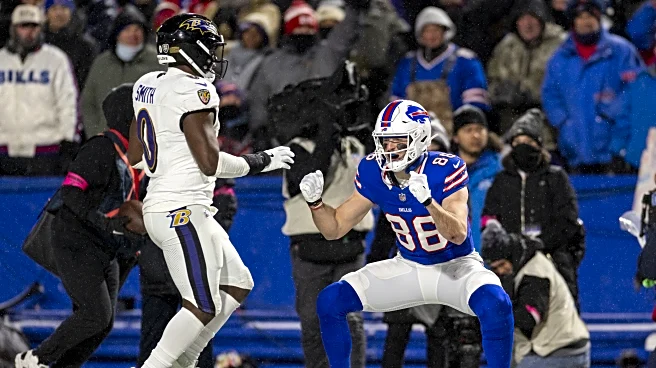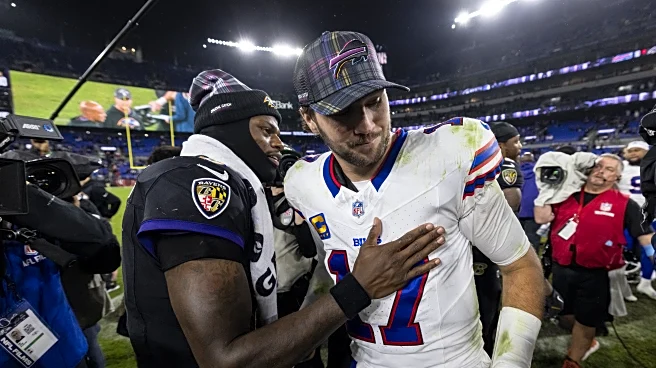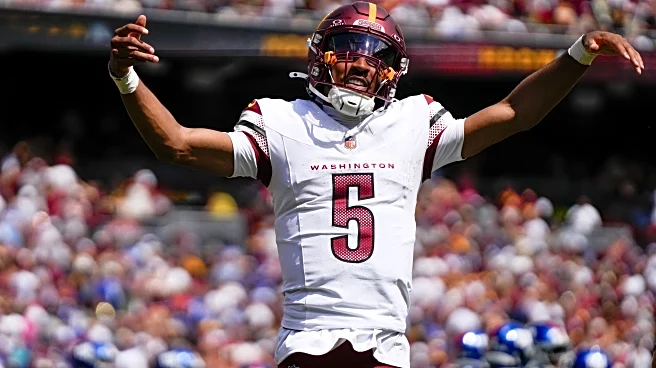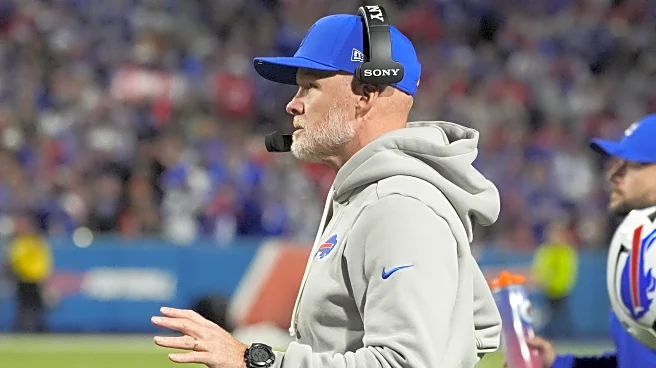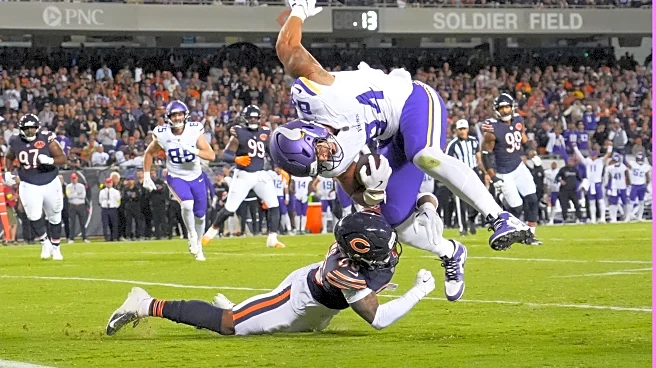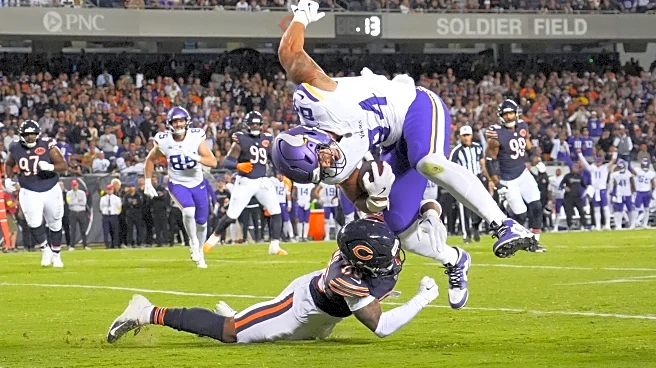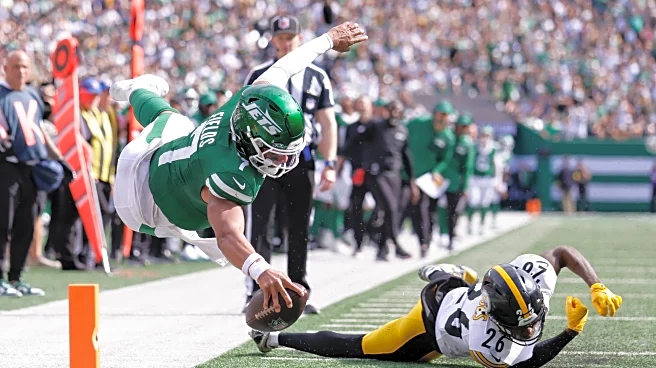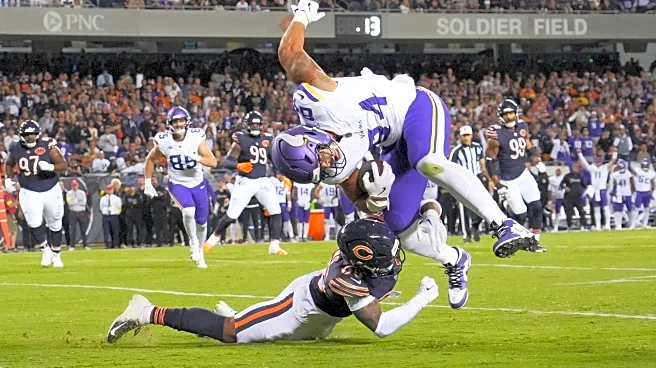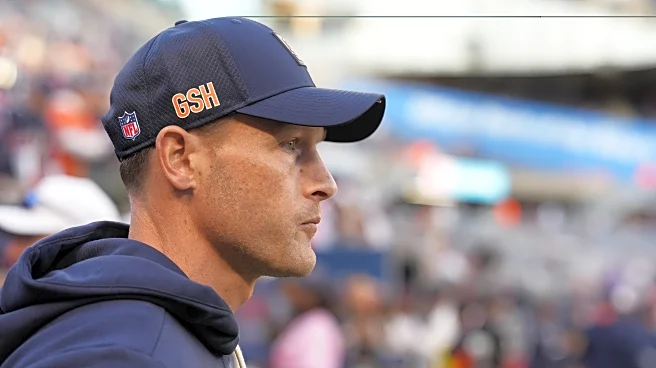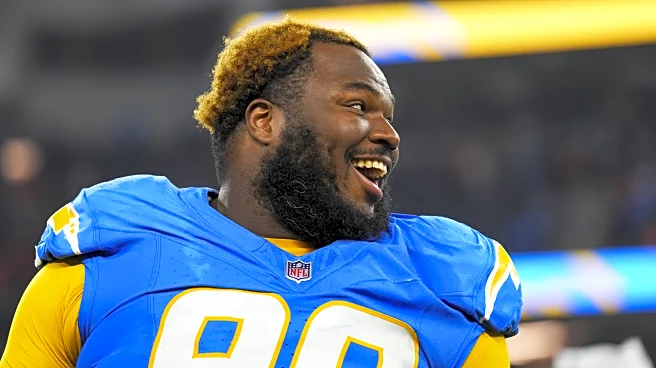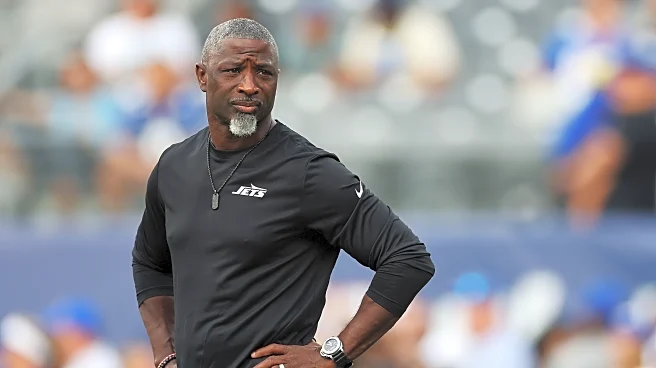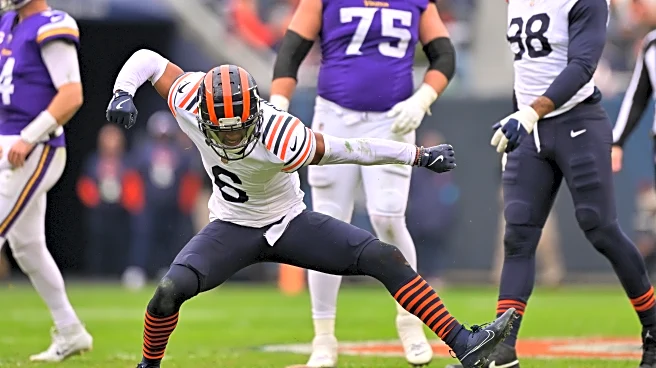
The Jets recently acquired former Bills and Vikings defensive tackle Harrison Phillips via trade. Today we break Phillips down in detail.
The 29-year old Phillips is listed at 6’3″ and 307 pounds and was a third round pick out of Stanford in 2018. Prior to joining the Jets, he started 62 games in seven NFL seasons, racking up over 300 tackles and eight sacks.
Background
Phillips was a highly successful wrestler and all-state lineman at high school in Omaha, but was only ranked as a three-star prospect
due to concerns over the level of competition. However, he impressed the coaches enough at Stanford to earn a full scholarship.
His career got off to a slow start as he was in a reserve role in his freshman year, registering nine tackles and two sacks in seven games, then suffered a season ending injury in the first game of his second season.
In 2016, as a redshirt sophomore, Phillips saw his role increased as he recorded 45 tackles and added six sacks. He was named as an all-Pac-12 honorable mention.
Then, in 2017, he led the FBS in tackles as he was named an all-PAC-12 first team selection. He also had a career-high 7.5 sacks. Phillips announced he was leaving to enter the 2018 NFL draft at the end of the season.
After impressing at the the combine and senior bowl, Phillips was eventually selected by the Bills in the third round. However, his NFL career began similarly to his college career, as he was a reserve in his rookie year and then suffered another season ending injury early on in year two.
He made the first three starts of his career in his third season in 2020, but by the end of his third season, he had just 54 tackles and half a sack in 31 career games.
2021 was a contract year for Phillips, who broke out with 51 tackles and four tackles for loss in 14 games, as he made eight starts. However, he left the Bills at the end of the season and signed for Minnesota.
Over the last three seasons, Phillips started all 51 games and helped the Vikings’ run defense to improve to 8th best in the NFL in 2023 and 2nd best last year. His snap counts and statistical production increased significantly as well.
The Vikings have good depth on their defensive line, so they opted to trade Phillips to the Jets after preseason, even paying part of his salary. The Jets will pay him $3.7 million this year and he will remain under contract for $7.5 million next year.
Let’s move onto some more in-depth analysis of what Phillips brings to the table as a player, based on extensive research and film study.
Measurables/Athleticism
Phillips was listed as a 223-pound weakside defensive end when he first started to gain interest as a high school recruit, but he bulked up to 285 as he headed to Stanford and now has a sturdy 307-pound frame with above average length.
The number that jumps out from his combine workout is 42 bench press reps, which shows how strong he is. Since 2015, only one player has beaten that.
He’s not otherwise known for his athleticism and only ran 5.21 at the combine with an unremarkable broad jump number. However, his agility numbers and vertical jump at the combine were excellent for his size.
Usage
Phillips is comfortable at the nose tackle position and took most of his reps there in college. However, NFL defensive lines are flexible so he has moved about a lot more, not getting to play as a pure nose tackle as often. The Bills were a 4-3 team and although the Vikings are a 3-4 team they don’t align the nose tackle over the center that often.
Motor
Phillips was just a rotational player in his first three seasons, playing approximately 40 percent of the time. However, he played 55 percent of the snaps in his final season in Buffalo. He’s played even more with the Vikings, topping out at just under 75 percent in 2023.
He may not have that much range in pursuit but he hustles over short distances and will battle and fight for leverage in the trenches and play to the whistle.

Pass rush
Despite racking up 13.5 sacks in his two years as a starter at Stanford, Phillips was a bit of a non-entity in the pass rush with the Bills, as he had just 1.5 sacks in four seasons, and a low pressure rate. However, he’s shown some development in that area with 6.5 sacks in his three years in Minnesota.

He doesn’t have much in the way of pass rush moves or a plan of attack, generating much of his production cleaning up when the pocket collapses, which he can use his strength to make happen.
Run defense
It’s obviously as a run defender that the Jets believe Phillips can really help them. He’s been a consistently productive defender against the run over the years, including in 2021 where he had the fifth best run defense grade in the NFL among defensive tackles, according to analysis site Pro Football Focus.
He obviously played a key role in the Vikings’ improvement during the three years he was there and they may miss him in that area as they transition to players who may be more disruptive.
Generally speaking, Phillips is at his best when holding his ground to bottle up runs himself, or take on blockers, enabling other players to make plays. He doesn’t penetrate deep into the backfield that often and only actually has 15 tackles for loss in seven years (which includes sacks). However, he has the strength to get his man off balance so he can shed blocks and plug gaps.

He is better at holding up against a double team than anyone the Jets currently have to pair with Quinnen Williams and arguably than most, if not all, of the players he’s lined up alongside in his career.

However, he can get downhill as well and moves well laterally without giving ground to stay in front of ball carriers.

Technique
As noted, Phillips doesn’t showcase an arsenal of pass rushing moves, but his technique in the trenches is sound. He’s become better at keeping his base wide and making contact with a good pad level since being drafted and his hand placement, leverage and balance, all help him to optimize his impressive strength.

It’s perhaps a dying art these days, but Phillips is legitimately capable of two-gapping, which again can help free up his linemates to make plays. He has control, is aware of what’s going on and has the technique to shift his leverage and to control the appropriate gap as the play develops.

Special teams
Phillips didn’t play special teams during the past two seasons, but in the past he has rushed field goals and blocked on the placekicking unit.
In college, where he also rushed punts, he had this field goal block.

Tackling
Considering how much of his work enables other players to clean up and make plays, Phillips’ production as a tackler has been nothing short of phenomenal. He’s registered over 50 tackles in four straight seasons, with the 92 tackles he recorded in 2023 representing the third most by an NFL defensive lineman ever in one season. He also led the nation in tackles in college.
As a result, his missed tackle percentages are low, as he’s averaged just over three per season. However, he did have an uncharacteristic 11 in 2023. A handful of these missed tackles were on would-be sacks.

Phillips’ strength is an asset in this area as once he wraps you up, you’re unlikely to get away and he is capable of reaching beyond his frame and still being able to drag a ball carrier to the ground.
He only has one forced fumble at the NFL level, and had just two in college.
Coverage
Phillips has rarely dropped back into coverage during his career, although he did do this a couple of times per game in 2023. This would only be dropping underneath into a shallow zone rather than picking up an assignment though.
He has good awareness in passing situations, dropping back to try to chase down short passes and getting his hands up effectively to contest. He has been credited with 10 passes defensed in his NFL career for batting down or deflecting passes at the line, including a career-high four last season.

Instincts/Intelligence
Phillips, as already indicated, plays with good awareness. His play recognition is impressive and he’s disciplined in terms of his run fits.

One famous moment that demonstrates his football IQ saw him blow up this play with the Bills trying to run out the clock in the last minute of a close game by jumping the snap count, no doubt aided by his knowledge of having been a Bills player in the previous season.

He only has one pre-snap penalty for a neutral zone infraction in his NFL career.
Phillips was an early graduate from Stanford, where he was a two-time all-Pac-12 academic first teamer and a two-time academic all-district selection.
Attitude/Demeanor
Phillips is regarded as a great teammate with outstanding character and has endeared himself to Bills and Vikings fans on his previous teams with a lot of community outreach work.
His on-field discipline is tremendous too, as he has just three defensive penalties in his career, two of which were for defensive holding.
The only possible negative in this area is accusations from Lions fans that he is a dirty player stemming from an incident where he appeared to kneel on Amon-Ra St. Brown’s chest at the end of a play, but it seemed a bit innocuous and may have been inadvertent.
Injuries
Phillips had to overcome torn ACLs in both 2015 and 2019 but has been durable since leaving Buffalo as he has started 51 of 51 regular season games over the past three seasons. He has been listed with back issues a few times but hasn’t missed time because of that.
Scheme Fit
Going back to a 4-3 team might be considered a step backwards for Phillips, who seemed to thrive in Brian Flores’ 3-4 system. However, he might be a better fit for the Jets right now based on the direction each program is going in.
The Vikings are looking for disruptive penetrators whereas that’s all the Jets have had over the past two years and it’s created an imbalance that led to their interior defensive line giving up a lot of yardage up the middle. Phillips clearly has a skill-set that adds a necessary dimension to the Jets’ defense with Aaron Glenn having preached a role-based philosophy at times.
He was a teammate of current Jets Kris Boyd and Kene Nwangwu in Minnesota.
Conclusions
On paper, Phillips looks like an excellent addition for the Jets. He gives the defense something it lacks and could free up Williams to produce more than he has in the past. His presence could also lead to more playmaking opportunities for edge defenders and linebackers. The early results from the first game of the season were solid.
He’s been a solid run defender for the past few seasons and although his playing time and performance grades on analytical sites dropped off a bit last year, the Vikings run defense as a whole was very good and he was a big part of that.
As an experienced veteran with good football IQ, he should be able to hit the ground running and step right into the starting line-up. Hopefully, he’ll have a tangible effect on the Jets’ ability to stop the run and then the team will get more opportunities to get off the field on third down.
